
How to Use Mini servo : Examples, Pinouts, and Specs
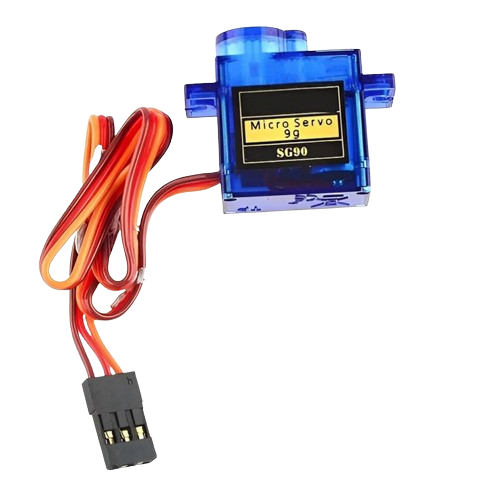
 Design with Mini servo in Cirkit Designer
Design with Mini servo in Cirkit DesignerIntroduction
The Mini Servo is a compact motor capable of precise angular rotation, making it ideal for applications requiring controlled movement. It is widely used in robotics, remote-controlled devices, and automation systems. The servo operates by receiving a Pulse Width Modulation (PWM) signal, which determines the angle of rotation. Its small size and ease of use make it a popular choice for hobbyists and professionals alike.
Explore Projects Built with Mini servo
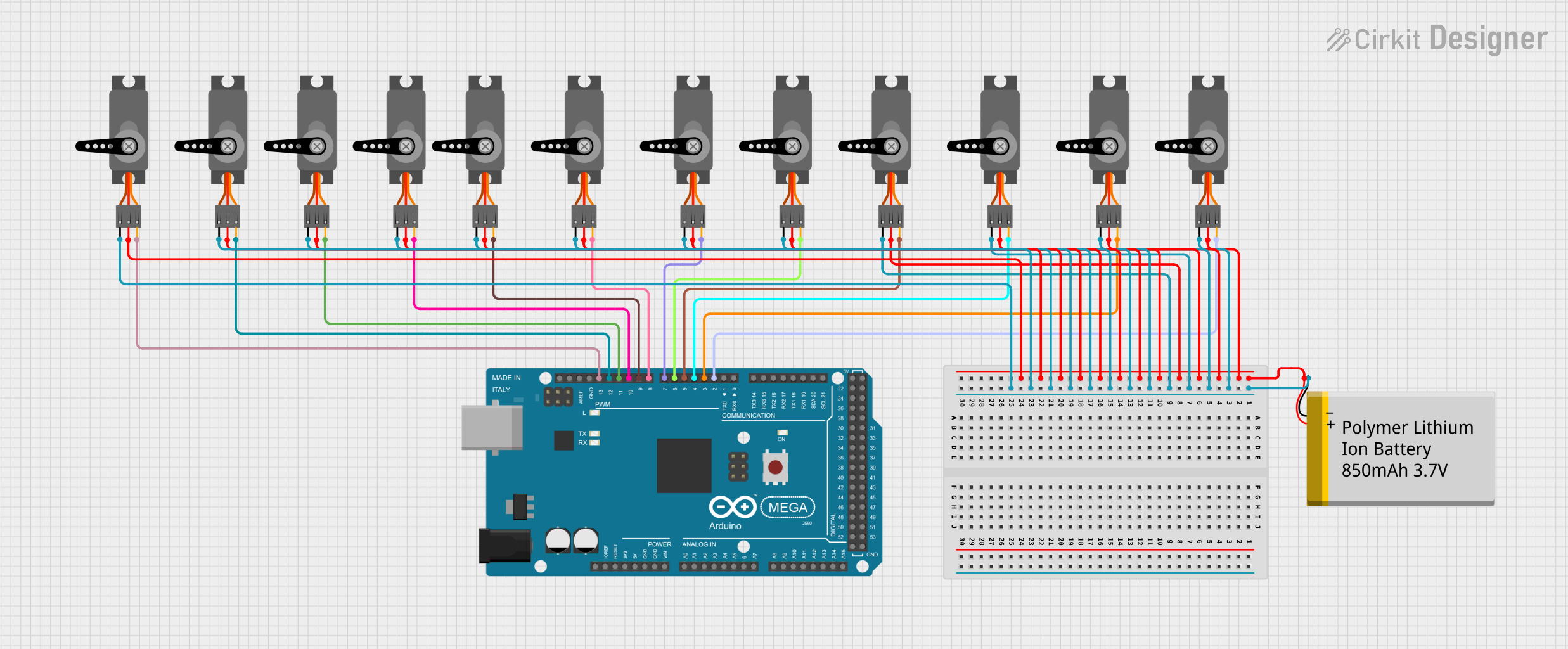
 Open Project in Cirkit Designer
Open Project in Cirkit Designer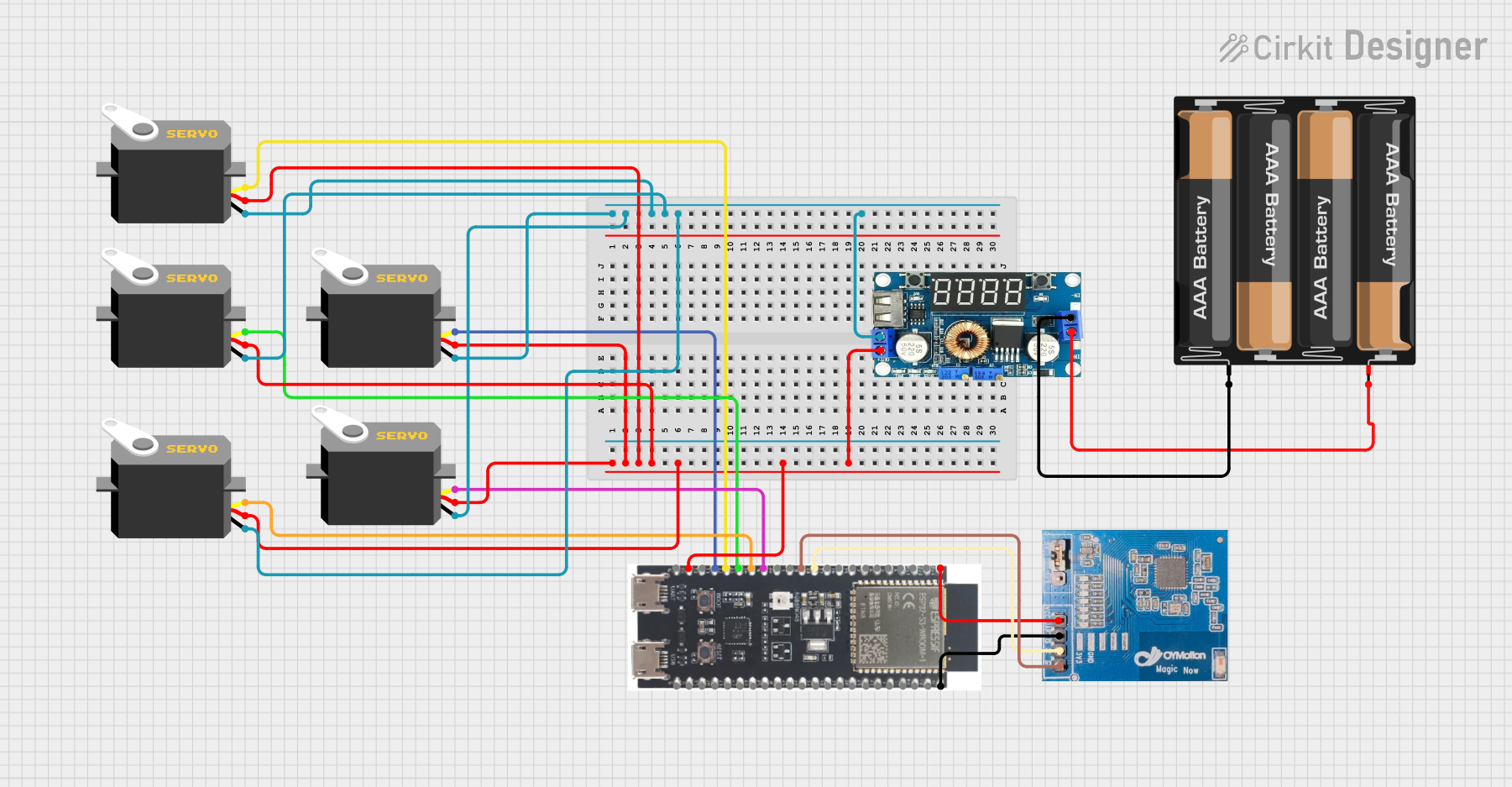
 Open Project in Cirkit Designer
Open Project in Cirkit Designer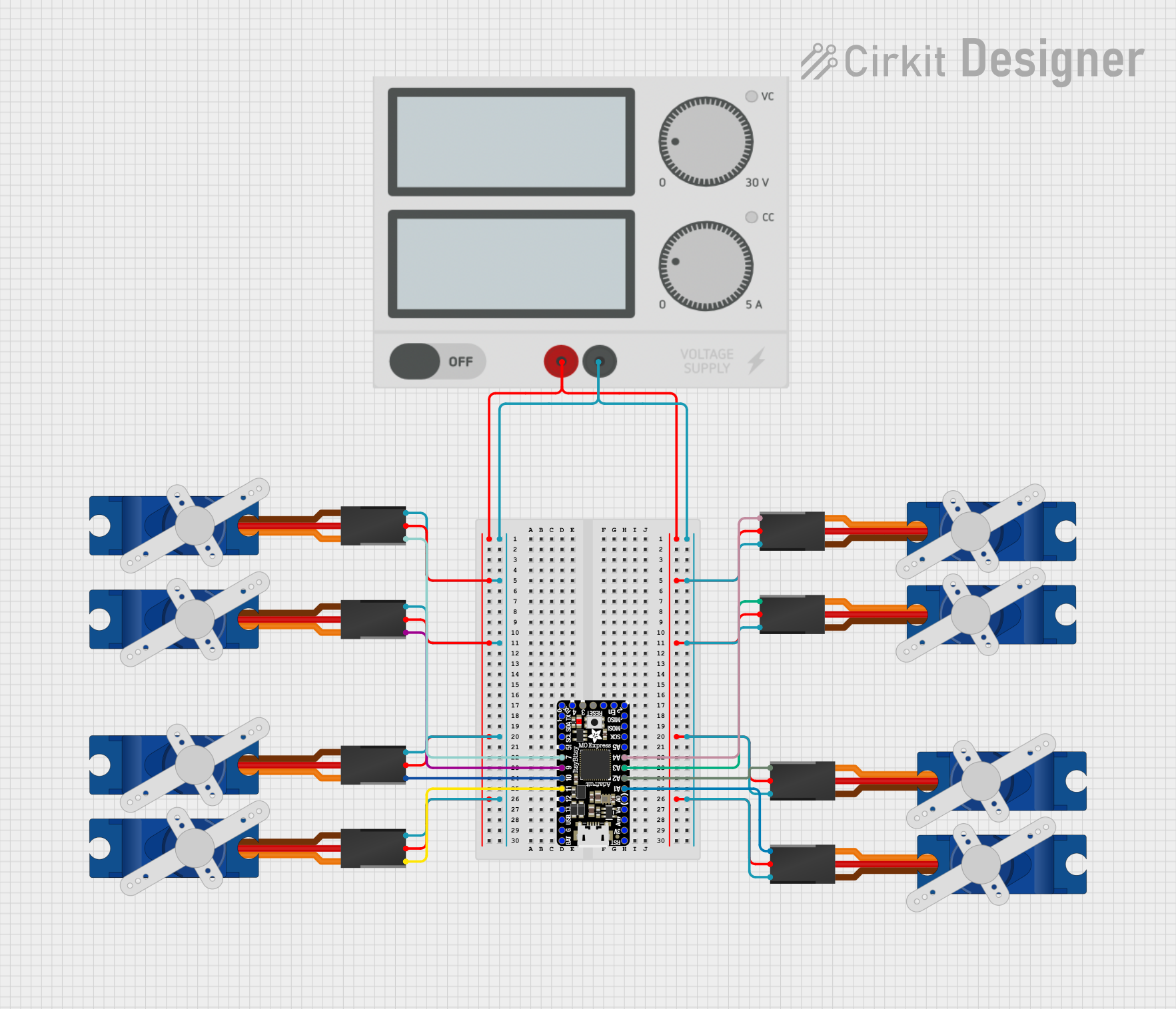
 Open Project in Cirkit Designer
Open Project in Cirkit Designer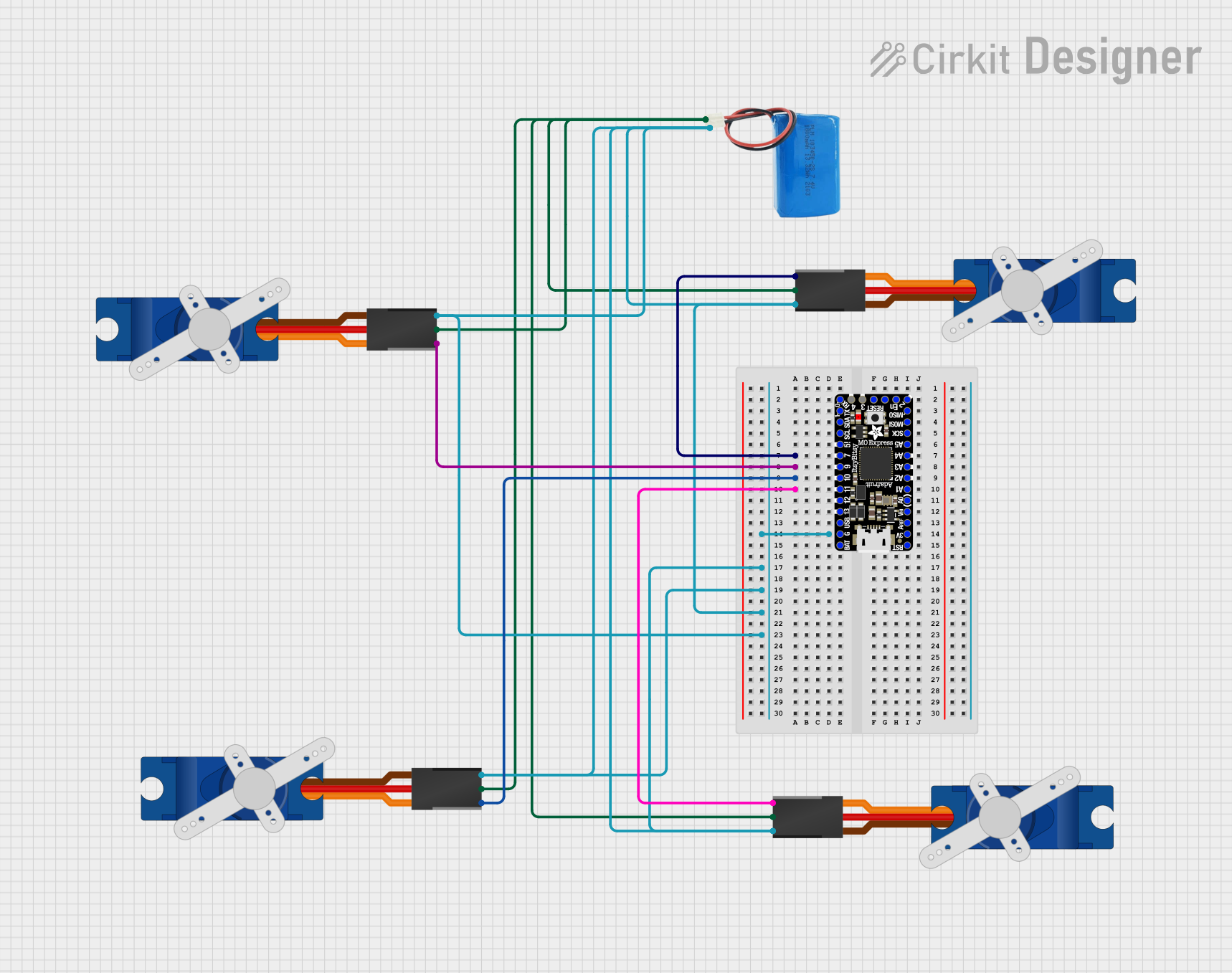
 Open Project in Cirkit Designer
Open Project in Cirkit DesignerExplore Projects Built with Mini servo

 Open Project in Cirkit Designer
Open Project in Cirkit Designer
 Open Project in Cirkit Designer
Open Project in Cirkit Designer
 Open Project in Cirkit Designer
Open Project in Cirkit Designer
 Open Project in Cirkit Designer
Open Project in Cirkit DesignerCommon Applications:
- Robotic arms and grippers
- Remote-controlled cars, boats, and planes
- Automated systems and mechanisms
- Educational projects and prototyping
Technical Specifications
Below are the key technical details of a typical Mini Servo:
| Parameter | Value |
|---|---|
| Operating Voltage | 4.8V to 6.0V |
| Stall Torque | ~1.8 kg·cm (at 4.8V) |
| Operating Speed | ~0.12 sec/60° (at 4.8V) |
| Control Signal | PWM (Pulse Width Modulation) |
| Angle of Rotation | 0° to 180° |
| Dimensions | ~22.2 x 11.8 x 31 mm |
| Weight | ~9 grams |
Pin Configuration:
The Mini Servo typically has three wires for connection:
| Pin Name | Wire Color | Description |
|---|---|---|
| VCC | Red | Power supply (4.8V to 6.0V) |
| GND | Black/Brown | Ground connection |
| Signal | Orange/White | PWM signal input for angle control |
Usage Instructions
How to Use the Mini Servo in a Circuit:
- Power Connection: Connect the red wire (VCC) to a 5V power source and the black/brown wire (GND) to the ground.
- Signal Connection: Connect the orange/white wire (Signal) to a PWM-capable pin on your microcontroller (e.g., Arduino).
- PWM Signal: Use a PWM signal to control the servo's angle. A typical PWM signal has a frequency of 50 Hz, with a pulse width of 1 ms to 2 ms corresponding to 0° to 180°.
Important Considerations:
- Power Supply: Ensure the power supply can provide sufficient current (at least 1A) to avoid voltage drops.
- Avoid Overloading: Do not exceed the torque rating to prevent damage to the servo.
- Signal Stability: Use a stable PWM signal to avoid erratic movements.
- Mechanical Limits: Do not force the servo beyond its physical rotation limits (0° to 180°).
Example: Connecting a Mini Servo to an Arduino UNO
Below is an example Arduino code to control a Mini Servo:
#include <Servo.h> // Include the Servo library
Servo myServo; // Create a Servo object
void setup() {
myServo.attach(9); // Attach the servo to pin 9
}
void loop() {
myServo.write(0); // Move servo to 0 degrees
delay(1000); // Wait for 1 second
myServo.write(90); // Move servo to 90 degrees
delay(1000); // Wait for 1 second
myServo.write(180); // Move servo to 180 degrees
delay(1000); // Wait for 1 second
}
Code Explanation:
- The
Servolibrary simplifies servo control. - The
attach()function links the servo to a specific pin. - The
write()function sets the servo angle (0° to 180°). - Delays allow the servo to reach the desired position before the next command.
Troubleshooting and FAQs
Common Issues:
Servo Not Moving:
- Cause: Incorrect wiring or insufficient power supply.
- Solution: Double-check connections and ensure the power source provides adequate current.
Erratic Movements:
- Cause: Unstable PWM signal or electrical noise.
- Solution: Use a decoupling capacitor near the servo's power pins and ensure a clean PWM signal.
Overheating:
- Cause: Prolonged stalling or overloading.
- Solution: Avoid exceeding the torque rating and ensure the servo is not physically obstructed.
Limited Rotation:
- Cause: Servo is a standard type with a 180° limit.
- Solution: Use a continuous rotation servo if 360° movement is required.
FAQs:
Q: Can I power the Mini Servo directly from the Arduino?
A: While possible, it is not recommended as the Arduino's 5V pin may not supply enough current. Use an external power source.Q: How do I control multiple servos?
A: Use multiple PWM-capable pins or a servo driver module for better control.Q: Can the Mini Servo rotate beyond 180°?
A: No, standard Mini Servos are limited to 0° to 180°. For continuous rotation, use a modified or specialized servo.
By following this documentation, you can effectively integrate and troubleshoot the Mini Servo in your projects.